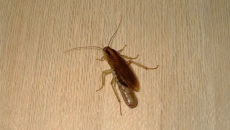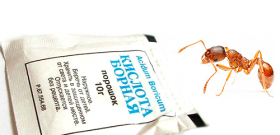0:23 - What is the advantage of boric acid in the fight against cockroaches.
1:19 - How boric acid affects insects.
1:50 - An effective recipe for making boric acid balls to remove cockroaches from an apartment.
2:53 - What you need to know before dealing with pests in this way.
3:19 - Why you need to shut off all sources of water.
4:09 - In what situations is boric acid powerless.
4:35 - What you need to do to once and for all poison cockroaches in the house.
4:53 - How long does boric acid poisoning of insects last.
Boric acid can really help get rid of cockroaches, but this tool has its drawbacks and nuances, due to which the substance is not always effective.
If the substance enters the body of a cockroach, it leads to dehydration, and then to the death of the insect. A huge advantage is that cockroaches do not develop resistance to this remedy.
An interesting fact is that boric acid affects cockroaches as a sterilizer. In females, an instant damage to the genital organs occurs, in males, its sodium salt (borax) provokes a lack of semen. If the acid does not lead to the death of the pest, then it will certainly make it impossible to reproduce.
On a note
To date, there have been no situations of cockroach resistance to this chemical. This suggests that insects have no chance of surviving by absorbing enough of this kind of insecticide.
This remedy works only if it enters directly into the gastrointestinal tract. It can be concluded that the insect must first find the poisoned bait and consume it.Removing cockroaches with boric acid is a rather complicated process, and also not fast: first you need to make baits, spread them around the apartment, wait until the cockroaches find the poisoned bait, eat it and die.
How long it will take depends on the number of poisoned baits. To destroy an entire population of insects in the house, a few days are definitely not enough. If there are not so many pests in the apartment, then boric acid can be used to combat them.
The preparation of baits can occur in completely different ways, there is no single recipe. The proportions may vary. To prepare the poisoned bait, you can use different products, cereals, mashed potatoes or even sugar are perfect. These products are well suited for making homemade baits: being in the air, they only dry out, and you can also initially mix the right amount of boric acid into them. On the basis of the resulting mixture, medium-sized balls are made, which are localized throughout the apartment. Usually they are laid out where individuals are most often found. This process needs to be controlled: as the baits are eaten, you need to constantly prepare new ones and put them in place of the old ones.
And further: Aerosol Raptor poisons all cockroaches not very quickly, but effectively - see the results of our experiment...
Do not forget about the most important rule - it is necessary to identify ways for insects to enter the apartment. All gaps must be eliminated, otherwise the fight against cockroaches can drag on forever.
The great advantage of this tool is the relative safety for the human body. Decades ago, when pharmacies did not have a large selection of antiseptics, boric acid was used to treat wound surfaces on the skin. It was even sometimes used orally, but with the wrong dosages, this can lead to poisoning. Compared to other insecticides, boric acid is safer.
In conclusion, several conclusions can be drawn. Boric acid is quite effective against cockroaches in the house, but you have to be patient and not hope for a quick result. This method is suitable for a small number of cockroaches. With a strong infestation, the effect may not be noticed at all, since most females and males simply will not find the bait.











